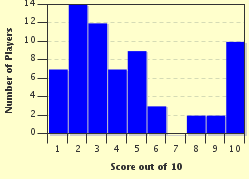Quiz Answer Key and Fun Facts
1. Among the of heroes of 9/11 were approximately 400 dogs and their human handlers, who worked on-site at the World Trade Center, the Pentagon and in Shanksville, PA. Some arrived within hours after the attacks. During their shifts, how long would the dogs and their handlers work in the rubble continuously before a break or rest period?
2. On day two, Kaiser, a German shepherd was preceding his handler, Tony Zintsmaster, up on a pile of rubble and when he suddenly stopped short and refused to move. What was the reason Kaiser refused to continue?
3. A few weeks into the rescue, a SAR dog named Servus, fell head-first twenty feet into a jagged pocket within the rubble. His nose filled with dust and debris and he was suffocating. His injuries caused him to go into shock and his owner/ handler made an "on the spot decision" to retire him.
4. Sadly, the time came when some SAR dogs were dismissed and ________ dogs, trained to locate deceased victims, took over.
5. The SAR dogs of 9/11 were trained in three varying methods: "find it" which is locating human scent, "show me" in which he finds a victim usually by tracking or trailing, returns to his handler and then leads the handler back to the person. What is the third method called in which the SAR dog stays with the victim and alerts his handler by barking?
6. Which item(s) was(were) standard issue as part of SAR dogs equipment?
7. Not every dog dispatched in the recovery effort worked in the rubble. Some dogs were dispatched specifically for therapy. Which of the following did therapy dogs NOT detect in rescue workers?
8. Which of the following was included the standard decontamination process at the end of each SAR dog's shift along with baths, ear cleaning and eyes rinsing?
9. Dusty, a golden retriever SAR who was deployed to the WTC, took on additional duties of comforting firefighters and rescue workers. She had a very impressive resume, however which of the following was NOT one of her "assignments"?
10. As a result of locating the remains two victims (firefighters) at Ground Zero, a 12-year-old German shepherd named Worf displayed signs of which condition?
Source: Author
sally0malley
This quiz was reviewed by FunTrivia editor
Tizzabelle before going online.
Any errors found in FunTrivia content are routinely corrected through our feedback system.

